This blog post is about my visit to the “Journey of a Studio -Bourne & Shepherd” exhibition during the Jaipur Literature Festival (JLF). Its venue was Hotel Clark Amer which is famous for its JLF musical evenings. The exhibition was an interesting mix of vintage pictures of India, pop-up stores, and recycled installations by WOLF Jaipur. The vintage pictures on the display were the 19th-century photographs from India clicked by the World’s longest surviving photographic studio in Kolkatta, Bourne & Shepherd. Samuel Bourne, one of its founders was one of the earliest photographers of India.

About Bourne & Shepherd
Bourne & Shepherd was the oldest surviving photo studio in the world that recently closed down in Kolkata. Samuel Bourne, a former bank clerk, arrived in India from Europe in 1836 and traveled widely across the Indian subcontinent, clicking the pictures. He became one of India’s greatest photographers of his era. Charles Shepherd joined him in Shimla in 1863, and in 1866 the duo set up a studio in Calcutta with the name Bourne & Shepherd. In 1870, Samuel Bourne went back to England and sold off his shares in the studio, and left commercial photography, completely. He left his archive of over 2,200 glass plate negatives with the studio which were reprinted and sold, over the following 140 years. Samuel Bourne’s work immortalized the Indian landscape and was fervently consumed by the British public in the form of postcards, book illustrations, and albums. After Samuel Bourne’s departure, Colin Murray undertook the photographic work till 1884. Indian royalty, nobles, Europeans, and a mushrooming upper-middle-class heavily patronized the Bourne & Shepherd studio.
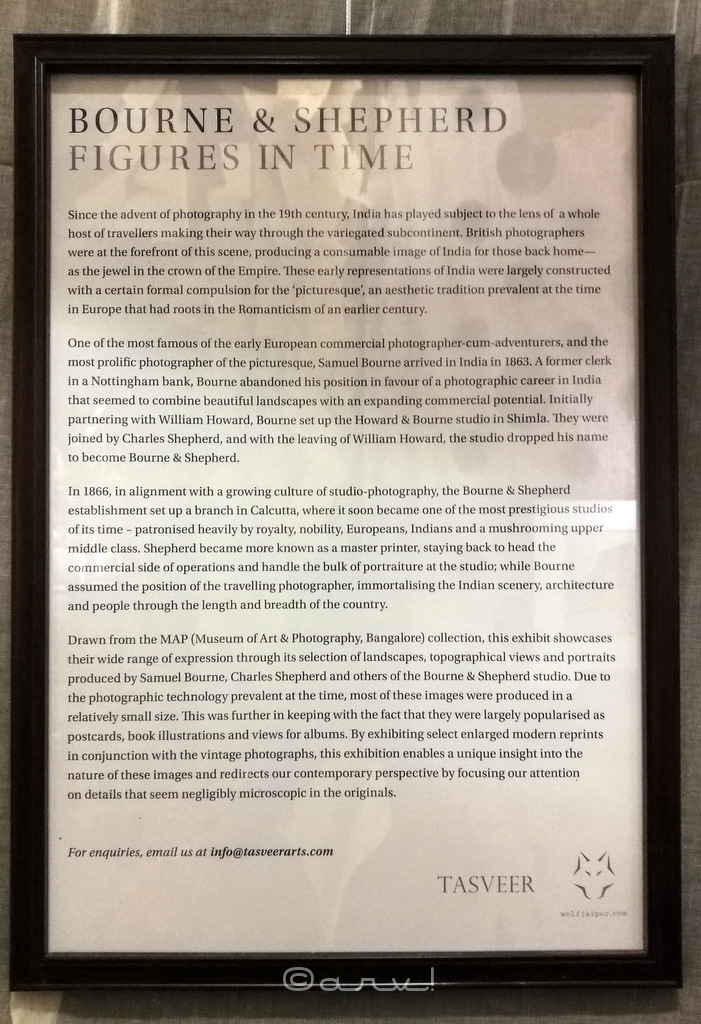
The availability of Photographic equipment in the 19th century inspired the European travelers to document their journey and life on the vast Indian sub-continent. Since the British Empire occupied the Indian subcontinent, British photographers were at an advantage. These photographers curated the daily life, people, and street scene of India, they often projected it as a jewel in the crown of an empire. The pictures in this exhibition have already done a few rounds in other cities by the name of “Figures in the Time: Bourne & Shepherd” organized by Tasveer Arts.
Here are a few pictures from this show.
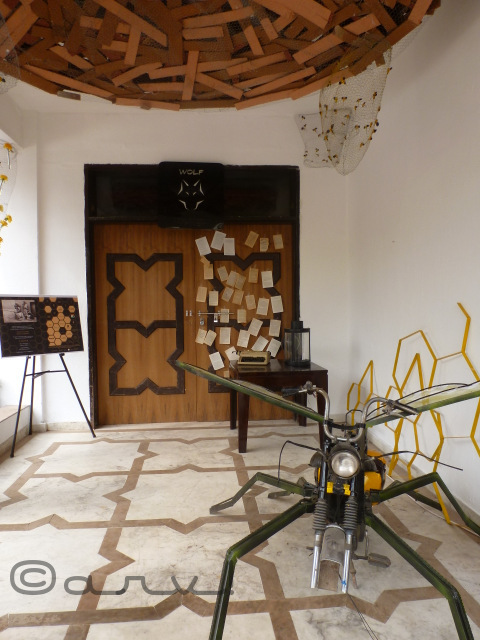
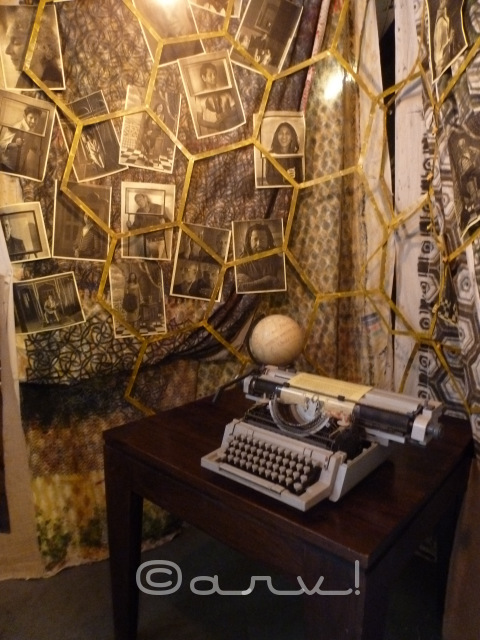
The first picture on display in the exhibition was of the famous Amber Fort with the title “Jaipur: The palace from the lake” dating to 1870 AD. If you have ever been to Jaipur and experienced Amer Fort, you can compare how little it has changed, over the years. Even in 1870 AD, it was out of use. The Fort was vacated around 1729 AD as the capital shifted to Jaipur. It was left and allowed to decay with the passage of time.
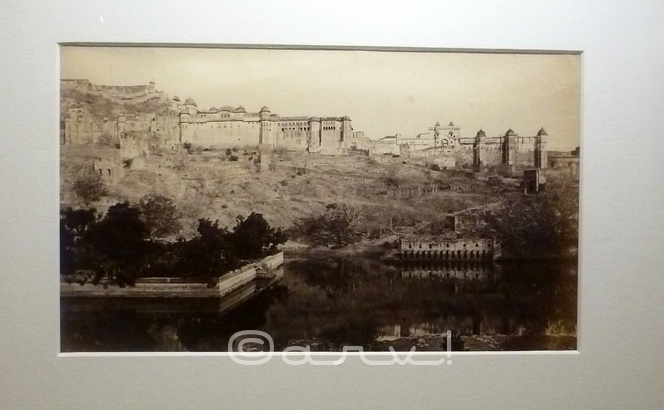
The exhibition wasn’t just about the pictures. It also had many collections of garments and showpieces, set up as a pop-up store.
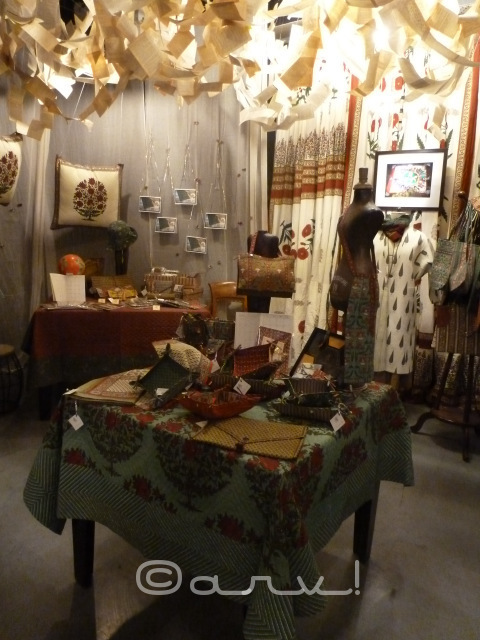
It’s difficult to imagine what Kolkata or Calcutta looked like in the 1860s. Here is a picture of the Calcutta harbor by Samuel Bourne.
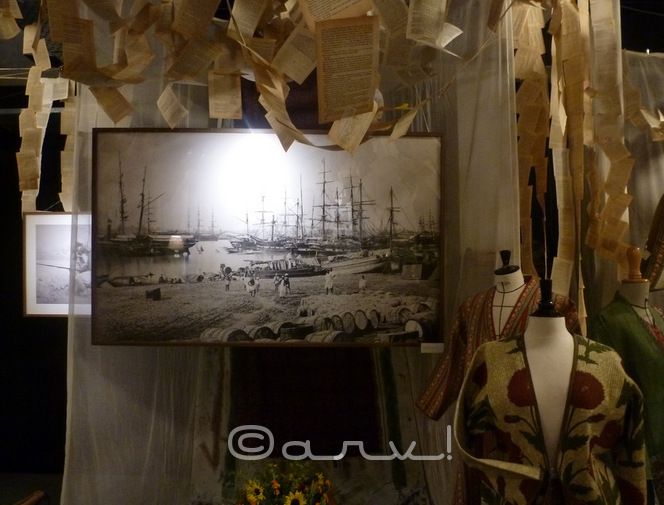

Another picture of Kolkata shows the Government house on the old courthouse street in the 1860s.

Here is a picture of the famous Buland Darwaza from the Fatehpur Sikri, near Agra.
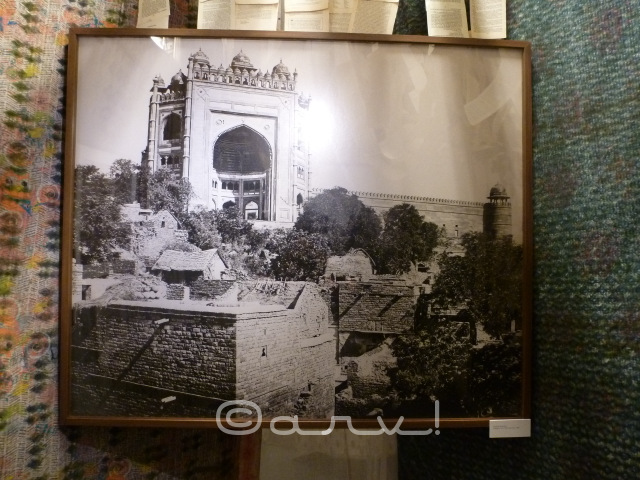
The following picture by Samuel Bourne shows a group of temples in the famous Ghats of Varanasi.
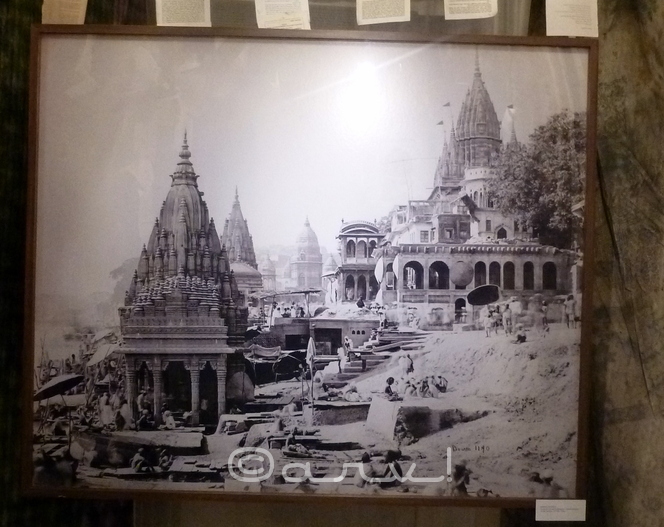
Shot of the Great Eastern Hotel on Old Court House Street in Kolkata. It is one of the oldest functioning heritage hotels in India, now run by the Lalit group of hotels. To get a better sense of this picture, I’m also posting an enlarged copy of this picture.

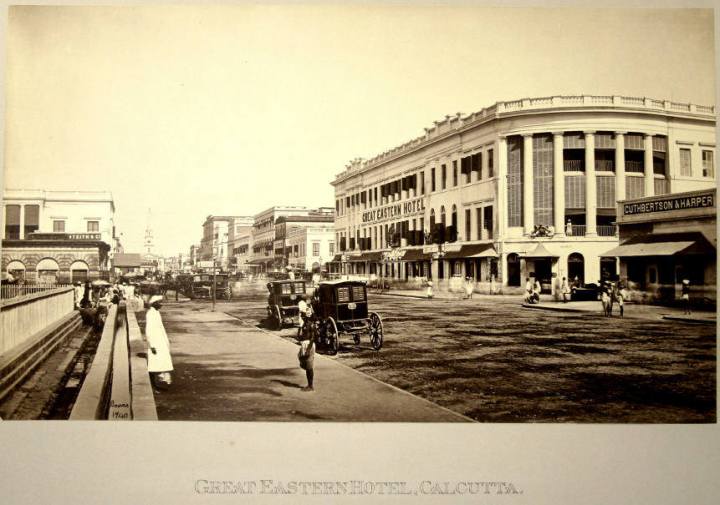
Here is a motley of pictures from India. The center of attraction here is the famous Taj Mahal in Agra.

They make the tree from the pages of discarded books.
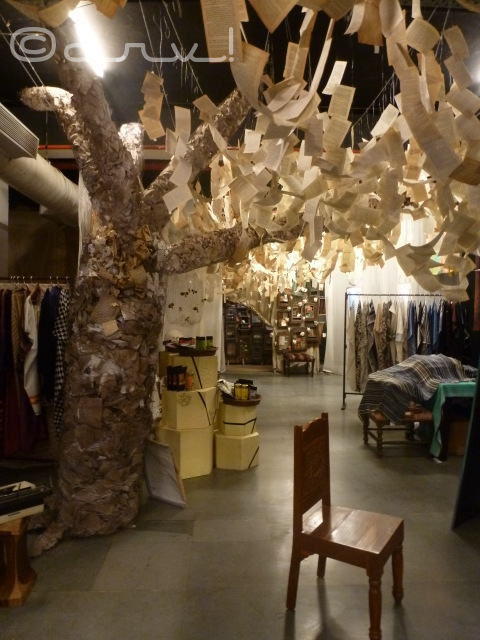
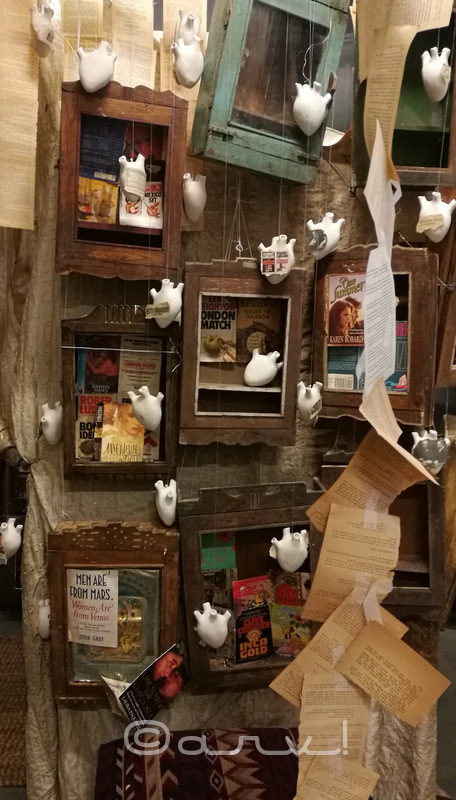
This picture depicts the creative aspect of this exhibition.
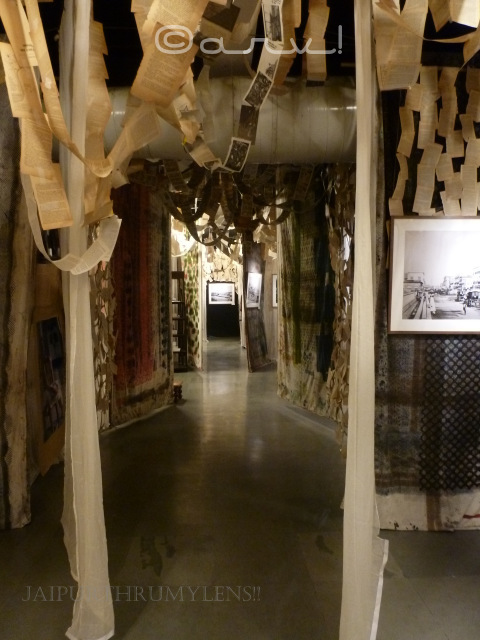
There were many pictures from Lucknow, Fatehpur Sikri, Varanasi, Jaipur, Kolkata, and the famous Raj-era hill station, Darjeeling. I particularly liked this picture of the famous Darjeeling Train route featuring one of the many loops that fall on this railway line. Darjeeling Train is part of World UNESCO World heritage sites.

Let me reproduce it in an enlarged size.
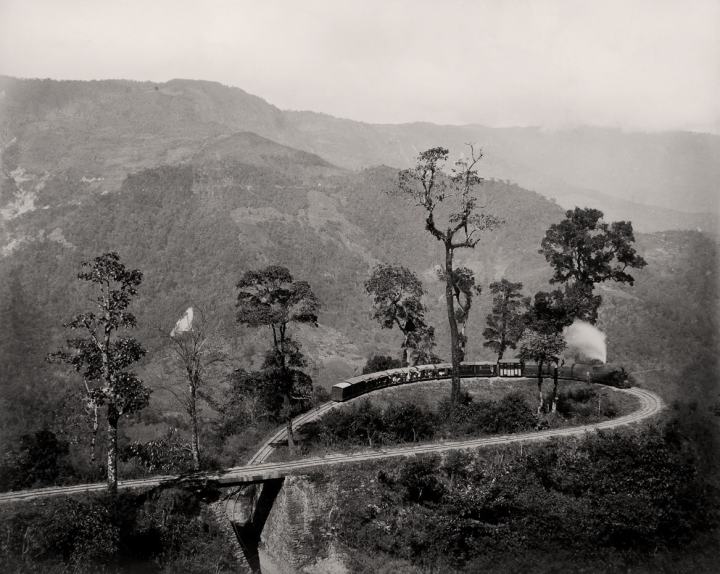
If you enjoyed reading this post, don’t forget to share it on your social media
Follow Jaipurthrumylens on Facebook Twitter Instagram
To summarize, I think it’s great to see these vintage pictures shot by Bourne & Shepherd studio during the 19th century. It provides an easy comparison of how things looked then and now. It would interesting to talk about how one of the Jaipur kings was capturing Jaipur on his camera in a similar fashion. Maharaja Sawai Ram Singh II was an ardent photography lover. Check out his photography in Photography By Sawai Ram Singh II | Jaipur Thru The King’s Lens
I feel that vintage pictures of India were marginalized by the pop-up stores. These pictures merely acted as a prop to the glitzy merchandise spread all around. While there were salespersons selling the products on display, there was no one to talk about these pictures and their context. There was no connection with the Jaipur Literature Festival. Do you also love vintage pictures?
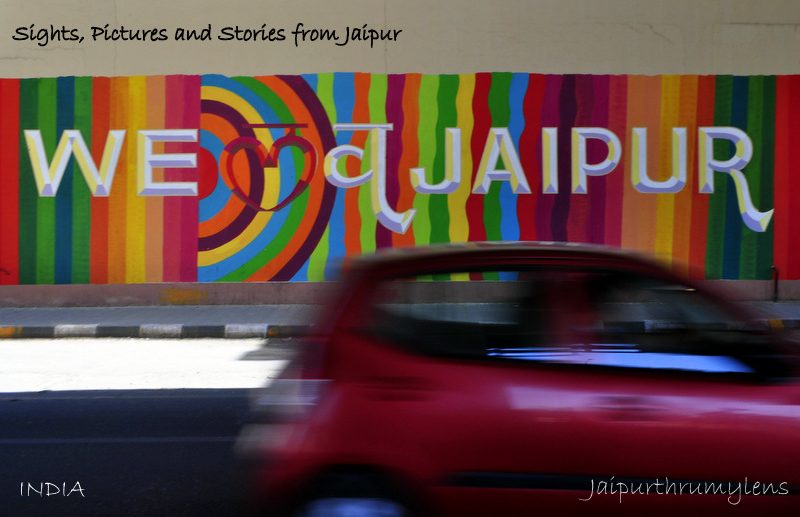

Well penned 👍
LikeLiked by 3 people
Thank You Monika! 🙂
LikeLiked by 1 person
wow.. what camera do you use ?
LikeLiked by 2 people
Well, I generally use Panasonic Lumix super zoom for most of my pictures. At times, I rely on my Canon DSLR. Of late, I have started using Smartphone camera too since I upgraded to a new phone which is capable of shooting excellent images in low light conditions. This post also has few pictures shot by Smartphone.
Do you also use Smartphone to click pictures?
LikeLiked by 1 person
I mainly use smartphone itself. U know smartphone can also be turned into movie making machine. I don’t have DSLR. Just a point n shoot Sony cybershot one ..
LikeLiked by 3 people
The world is actually ditching point and shoot camera and opting for smartphones. This is the trend and is bound to continue, for the phones are getting better sensors and it can be shared instantly. DSLR will continue to be used by those who are passionate about photography. In fact, many professional photographers who have been using DSLR for years have abandoned it for smartphones. So my friend, you have just opted for the latest trend! 🙂
LikeLiked by 3 people
Thanks buddy.. Keep sharing some tips n tricks so that I could adopt it too.. And let me know if u r using some additional accessories
LikeLiked by 2 people
Sure…I’m sure you would love checking out this post that I made on tips for clicking better pictures with a smartphone.
https://capturesthrumylens.wordpress.com/2017/01/26/ten-tips-and-tricks-to-improve-your-mobile-photography/
I also write on this blog, you can check it out. Do let me know what you think about it. 🙂
LikeLiked by 1 person
That’s so kind of u yep I will check that out ..
LikeLiked by 1 person
Great…will look forward to hear your suggestions and comments! 🙂
LikeLiked by 1 person
Hello there Arv! Great post once again! I love it how you pick such interesting stuff in your city and bring them to us in even more interesting way. And a photographers’s post on vintage photographers’ photos? Wow! Enjoyed the photos and your comments on them.
As far as the venue and pop-shop (or whatever it is called) is concerned, i like the beginning pictures where the entrance etc was shown. But as it went further and i had a look at the ambiance, i thought it has too much of a designer touch then required. And a tree made up of no-longer-in-use books? The surrounds, including the tree looks like a graveyard of books! When some unmatchable ideas collide, such photo exhibition take place with a pop-up recycled item shop!!
LikeLiked by 4 people
Mana, There’s always something or the other happening in this city. It is not possible for me to attend all such events so I choose the ones that have some interesting element.
I too feel that vintage pictures got lost in the “selling atmosphere”. In fact, these pictures were more like a prop to set the ambiance, as you pointed out. I would love to see all pictures clicked by Samuel Bourne someday! Do you like vintage pictures and postcards, mana?
LikeLiked by 1 person
I do. In fact, I enjoy vintage pictures more then contemporary ones (in many aspects). It is because each of them were taken with so much of care and very focussed vision of what the photographer wanted to show. These days digital photography has lowered value of a real good photograph. I mean look at those pictures you showed. Each had a unique angle and though we see photos being flooded everywhere, they were a sight to see.
In the beginning of the year 2015, my institute had hosted an exhibition of Lala Deen Dayal’s photographs and I swear, you can never get enough of them!
LikeLiked by 3 people
Lala Deen dayal, is very prominent name when it comes to Indian photographers in the initial years of photography industry in India. Along with Gobindram Oodeyram, Samuel Bourne, they lead the photography scene in India.
You have rightly said that going by how many pictures are taken with smartphones, the value of photograph has come down. How many people actually value the pictures they have in their phones? No one will look back at these 2000 or 3000 pictures in their smartphone. What if you lose your phones? or the phone crashes?
All these pictures which were taken many years ago have some reference value. They will continue to hold their value for years to come. Also, they have different style of taking pictures compared to how we take pictures. Today, we can be more creative in composing pictures, but then it was all about documenting and preserving for the future. Do you have any pictures from that exhibition Mana?
LikeLiked by 2 people
Here is a link to the institute page that reported the event: https://www.facebook.com/ldindology/posts/340230846184121
LikeLiked by 2 people
I’ll check it out! 🙂
LikeLike
Thank You Mana:)
LikeLike
Fascinating, Arv. It looks a wonderful exhibition. I wonder whether I have any Bourne and Shepherd postcards in my collection!
LikeLiked by 1 person
Thanks Mick. Indeed, to look at vintage pictures and postcards is quite interesting experience. I have already thought of working on a new project this year related to vintage pictures.
It’ll be interesting to see some postcards from your collection. 🙂
LikeLiked by 1 person
Very much so, Arv. I have a photo my father took in Delhi when he was there during the war, and I took one in exactly the same place (without realising it) when I was there once. The only difference is the size of a tree!
We mentioned the old photos in passing before, I think. I will have a look and see what I have (not that many, unfortunately) and put a few up sometime soon.
LikeLiked by 2 people
Mick, the pictures clicked by your father sounds so interesting. I’m sure others too would love to see these pictures. In an age, where we click multiple pictures every hour with smartphones, these pictures still hold immense value. For you of course, it has lot of emotional values.But I’m convinced, bringing them out for everyone to see wll be quite exciting. 🙂
LikeLiked by 1 person
I think you may have talked me into it!
LikeLiked by 2 people
Ha Ha! Looking forward to see the treasure trove! 🙂
LikeLiked by 1 person
Truly loved the post, it is so sad to know the studio closed down after being so prominent in its time! Do you know why they shut down…many people still like vintage?
My pick too would be the loop of the Darjeeling train…looks like it is still the same after centuries.
LikeLiked by 1 person
Alok, for the photography lovers, it’s not a great new. As is in the most cases, it must be the financial and viability issues. Since you’re interested to know more, you can read all about it in this link.
https://qz.com/718581/the-quiet-demise-of-the-worlds-oldest-photo-studio/
The loop in Darjeeling toy train route has changed quite a bit over the years. Do you like Vintage photographs, Alok? Any particular aspect that you love about it?
LikeLike
Big fan of vintage photography! Nicely covered
LikeLiked by 2 people
Good to know Raghav! I’ll share lot more things in coming days. And yes, let’s meet whenever you are next in town!
LikeLiked by 1 person
It’s beautiful exhibitions, Arv. Thanks for sharing and showing India to us in the past..
LikeLiked by 2 people
I’m happy you liked it Nurul! Being able to compare the same place in two different era is quite an experience! 🙂
LikeLiked by 1 person
I’ve passed by the Bourne & Shepherd shop so many times….it’s on SN Banerjee Road. Those vintage pictures are like priceless gems!
The decoration of the exhibition..all the set-ups and everything have been done so immaculately… thanks for sharing the pictures, Arv… 🙂
The railway loop photograph is a very famous one, the name of that loop is Batasia loop. Now it looks different though… 🙂
LikeLiked by 1 person
You have seen that studio? Did you ever walked in Maniparna? It’s sad that this studio closed down last year.
I agree that this exhibition was presented very well. I have heard about Batasia Loop too. That’s one section till which they run toy train for tourists in Darjeeling, now. But it looks completely different from the one in this picture, as you pointed out. This one is so narrow. I will suggest you to run through the picture taken by Samuel Bourne of Calcutta, I’m sure you’ll be surprised how the place has changed in last 150 years or so!!
How many times have you taken this train ride, since it’s in your home state? 🙂
LikeLiked by 1 person
No, sadly, I never walked in. They closed it down last year..and that’s sad indeed. For it was a part of the city itself…
The old pictures of Kolkata are amazing. I’ve seen some of them earlier on the web…the city has changed completely. But, for a photo-enthusiast, some essences of the past could still be seen in the serpentine alleys of the North Kolkata.
I’ve availed the toy train twice. It’s really a joyful ride… 🙂
LikeLiked by 1 person
Even though I have visited Kolkatta twice on a short trip, I have never explored any tourist or heritage sights in the city of Joy!
I do intend to take a heritage walk in Kolkatta as well as explore the addresses where my forefathers have spend sizable years before the turn of century. I’m yet to take a ride on this toy train as well, Maniparna.
Have you undertaken any heritage walk in Kolkatta? I’m not sure if you like built heritage. 🙂
LikeLiked by 1 person
A lot of my blogger friends from Kolkata arrange heritage walk from time to time but, I’m yet to participate in any of them. One of them even arrange a photo walk at night for ‘the haunting places of Kolkata’! If you ever plan to pay a visit here again, let me know and I’ll provide you the details… 🙂
LikeLiked by 1 person
Sounds great! It’ll be great to know more about these fellow bloggers, Maniparna.
Thank You for the help, will keep you posted whenever I plan to visit Kolkatta. 🙂
LikeLiked by 1 person
🙂 …
LikeLiked by 1 person
🙂
LikeLiked by 1 person
A visit to this stall or their shop must be like entering a time machine and going back to where it all began!
Well presented!
LikeLiked by 1 person
Thank You. It’s quite an experience to watch these vintage pictures. The show was well presented. 🙂
LikeLike
Wow great works. Thanks for sharing. Awesome pics.
LikeLiked by 1 person
Thank you Rupam. I’m happy you liked it. 🙂
LikeLiked by 1 person
Great post and pictures are amazing.
They had done creative designing and you captured it very well.
LikeLiked by 1 person
Thank You Sapna. I’m happy you liked it.
🙂
Do you like vintage pictures?
LikeLiked by 1 person
Pics are really like.
LikeLiked by 1 person
Nice 🙂
LikeLike
🙂
LikeLiked by 1 person
I just simply adore this. All of it! Ilove the pictures of the books/paper tree and motorbike. Lovely to look at. Great space to work. But the old pictures are fun as well. its my mission to get lots of black and white pictures of India and Africa and just look at them ( sad, but true) GREAT POST!!
LikeLiked by 1 person
Thank You Jackie! I agree the black and white pictures look amazing. It seems like a different world altogether!
You “mission” sounds interesting. Would love hear more about it. 🙂
LikeLike
why does Black and white seem more atmospheric? In some ways it says more than colour. When I was in South Africa I came across two albums of black and white pictures of ” white colonials” when they lived in Rhodesia . Obviously they scarpered over the border to live in SA and were selling their stuff to make ends meet. Anyway I bought the albums not because I believe in their way of life but because it was an amazing snap shot of an era long gone ……priceless really..
LikeLiked by 1 person
Ah! So you have some priceless treasure! It’s interesting to hear about it, Jackie. How can I look at these pictures? Have you made any post on these pictures? Although, I don’t dig much of B&W pictures, but anything vintage whether B&W or sepia will do. 🙂
LikeLike
Love to do that Jaipur Literature festival. I would come away with so many books and treasures. Nothing catalogued. Still in a suitcase, waiting for a spare day, sadly.
LikeLiked by 1 person
I’m hoping someday you’ll unbox them and post pictures on your blog for all of us to see. 🙂
LikeLike
A fascinating display of old photographs that are outstanding in detail, clarity and composition even judged by today’s world of digital photography! At the same time as I was admiring your pictures, I realized how much these old photos mean in terms of cultural insights into a bygone era of India. Well done, Arv!
LikeLiked by 1 person
Well said. These pictures are important for all of us. It shows how much the world has changed. For good or bad, that’s a different point of view, altogether!
Yes, it’s true that despite technical shortcoming like slow capturing speed, expensive raw material, bulky equipment etc. in comparison to the current technology, these pictures are incredible. They were captured on glass plate and aimed at documenting things.
I enjoy the pictures you have been posting on your blog, which are some 40-50 years old. 🙂
LikeLiked by 1 person
Thank you, Arv!
LikeLiked by 1 person
you are welcome 🙂
LikeLike
Faded images of a bygone era. So many gems to be found if we look closer. Thanks for sharing this, Arvind. 🙂
LikeLiked by 1 person
Well said, Cheryl! I’m happy you liked it 🙂
LikeLiked by 1 person
I missed on attending it this year too. Next year it is a must, cuz your blog has pushed me a lot to look forward to it. Thanks Arv for sharing the info. 🙂
LikeLiked by 1 person
JLF has earned some bad publicity in recent years because of the mad rush on weekends and the dilution of literary event towards a lifestyle one. Even then, it surely qualify for one visit, at least. I have chosen not to make a post on the core JLF event this year, so you’ll probably miss this virtual trip Tara. Did post few pictures on twitter and Fb though! 🙂
Do you like vintage pictures ?
LikeLike
Yup, that’s what I felt when I saw the cushions and dresses used in installation (in one of the above shared pictures). I heart vintage photos.
LikeLiked by 1 person
Tara, this particular exhibition was removed from the usual JLF venue. Frankly, it had nothing to do with the exhibition. It’s a add on event.
LikeLike
Wow this is amazing, thanks for this great share!!
LikeLiked by 1 person
I’m happy that you liked it Sumith. 🙂
LikeLiked by 1 person
Beautiful pictures! I especially loved the one of the toy train going down on a looping track. However, you haven’t mentioned why it closed down. I’d like to know why since it’s saddening to see a heritage being lost like this.
LikeLiked by 1 person
Pradita, the reason for closure is viability issues. The photo studios have lost relevance to days because of digital photography. People don’t need a photo studio, anymore. I came across this interesting read, which I’m sharing with you. I’m sure, you’ll love reading it. 🙂
https://qz.com/718581/the-quiet-demise-of-the-worlds-oldest-photo-studio/
LikeLiked by 1 person
Sigh! Another beauty of yore lost to instant gratification 🙁
LikeLiked by 1 person
True
LikeLiked by 1 person
That is indeed a very poignant piece. And I loved how he says ‘it’s one thing to express sorrow from afar but another thing tface reality here’…. We are losing an era here and there’s no clamor over it. No one cares. Like the end of the era of postcards and inland letters. Instant gratification yet to be blamed
LikeLiked by 1 person
That’s a sad reality and truth too! I remember how everyone used to get the prints developed from the films made with analogue cameras. But now? Everyone saves the pictures on mobile, pen drive….and share them on social media and whatsapp!
We have to accept changes… 🙂
LikeLiked by 1 person
Yes we have to. Our lone struggle won’t save them from extinction
LikeLiked by 1 person
True. 🙂
LikeLiked by 1 person
Great work 👍🏽hopefully I will be at the Jaipur Literature Festival in 2018 with my new poetry book 📚
LikeLiked by 1 person
That’ll be great! All the best! looking forward to see you JLF 2018 🙂
LikeLiked by 1 person
Nice post.Those prints are priceless and must be stirring many sepia tinted memories.
The designer prop show looks interesting .
LikeLiked by 1 person
Certainly, these are the most popular pictures that are circulating around. Very few photographers have captured life and streets of India from that era. We also have pictures of some of the most impressive buildings. Surely it’s priceless.
Thanks for sharing your thoughts 🙂
LikeLike